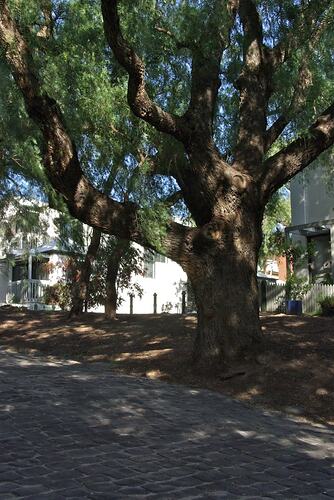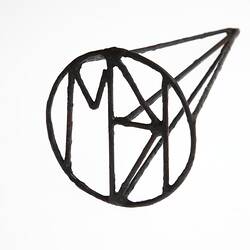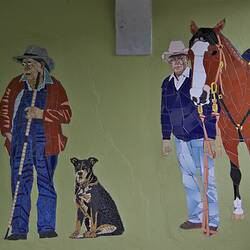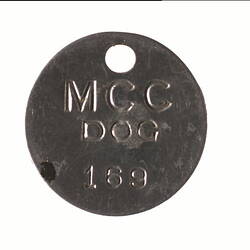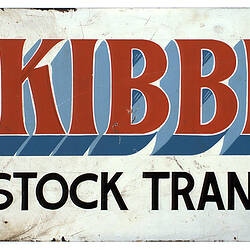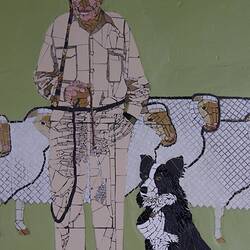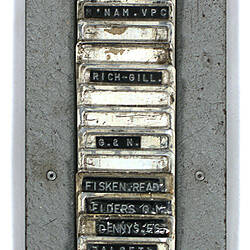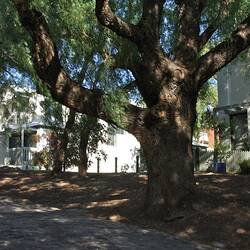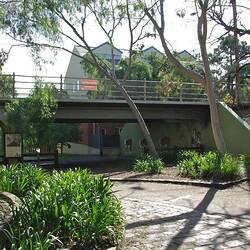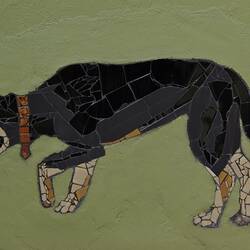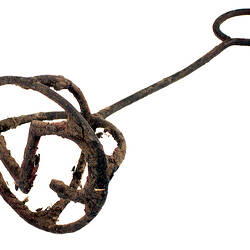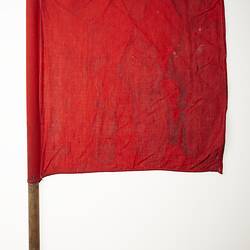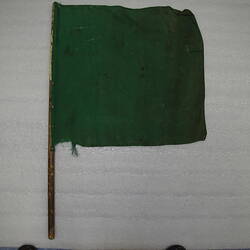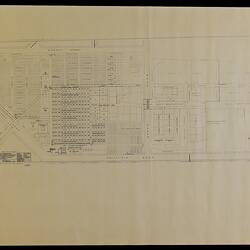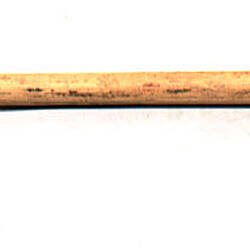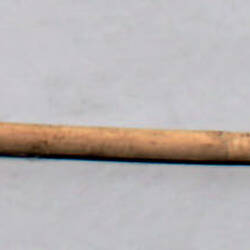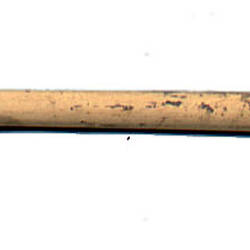In the early part of the 1800s, when Melbourne was established as a bustling commercial town, roads leading into Melbourne were, in most cases, made to a width that could handle large mobs of cattle and could cope with the wide turning circle needed for bullock teams, as livestock was brought in by drovers "on the hoof" with mobs numbering up to 500. Early stories tell of drovers with up to fifty dogs moving mobs of cattle or sheep along the roads, with the odd beast breaking free and wandering into neighbouring properties.
Consignments of animals from places such as Flinders Island were unloaded at the wharves and were driven to the Saleyards along the back streets of Melbourne and through Kensington. Even up until the late 1950s sheep, cattle and, in the earlier days, pigs were driven to Newmarket down main traffic roads and residential streets (Vincent 1992).
Over time, the method of stock transport evolved from delivering stock to market by droving to delivery by rail transport. Prior to the mid 1960s, stock which arrived by rail were unloaded at sidings adjacent to the Newmarket Railway Station and herded by drovers into the Saleyards either along Newmarket Street or Ascot Vale Road. By the 1950s over half the stock transported to Newmarket came on road trucks and by the 1980s virtually all stock was transported to and from the saleyards by road trucks (Vincent 1992). Red and green "Turner's Flags" were used to control traffic when stock was crossing the roads; while dogs, horses, yarding sticks and rattlers were used to move the stock along. Sheep were unloaded at races in Market Street opposite McCracken Street, and entered the Yards in Main Lane. Drovers also brought sheep and cattle into stock pens off Main Lane through gates at the corner of Racecourse and Smithfield Roads; after the sales, drovers led livestock down to "The Back Gate".
During the peak seasonal periods, up to 300,000 cattle, sheep and lambs were handled in one day, moved to, from and around the Newmarket Saleyards. Over time, a Newmarket 'Stock Route' developed that linked the various sites of the saleyards complex, with sections being constructed at different times as the complex expanded. It stretched from the former Angliss Meatworks, across the Maribyrnong River, through the Saleyards, over Racecourse Road, and as far north as the railway line. An underpass was constructed along the Stock Route in 1911 to move stock under Epsom Road and became known as "The Back Gate". The bridge that carries Epsom Road over the underpass was built by John Monash's company the Reinforced Concrete & Monier Pipe Construction Company and is one of the earliest examples of this type of reinforced concrete bridge in the State. Two other bridges were built along the Stock Route, the stock bridge over the Maribyrnong River built in 1941; and the McLennan Overpass over Racecourse Road, built in 1964. The rivetted iron trusses of the Maribyrnong Bridge previously served as a pedestrian bridge over the Yarra at the bottom end of Punt Road in Richmond, until replaced by the current Punt Road Bridge in 1938.
From the 1920s plantings on both sides of the route were started, partly for aesthetic reasons but also for practical reasons, such as providing shade. The Stock Route was mainly paved with bluestone, obtained from the local quarry opened in 1854. Steeper sections of the route had bluestone pitches arranged in patterns to prevent stock from slipping (FIT, 1984). The Route was most likely used for relatively short journeys, such as from truck bays to selling pens, and developed organically from the needs of the Saleyards and would have been used by all Newmarket employees in preference to the main roads.
The lasting significance of the Newmarket Stock Route largely relates to the visual and conceptual link that it provides between numbers of related sites. It encapsulates the process of movement of hundreds of thousands of animals through the site to different parts of the handling process, over more than one hundred years.
References:
Footscray Institute of Technology (FIT) Humanities Dept. 1984, 'The industrial archaeology of the Newmarket saleyards and meatworks complex, Victoria : a report / compiled by engineering students in the course HU 151 (Work, Technology and the West) during ...1984', rev. Ed. Footscray Institute of Technology Humanities Dept., Footscray.
Gilbert, Beverley. 2005, The worn stockwhip: tracking down a past, Elton Publications, Mont Albert,
Victoria. Living Museum of the West. 199-, The story of Newmarket Saleyards, Living Museum of the West, Kensington, Victoria.
Vincent, K. 1992, On the fall of the hammer : a personal history of Newmarket saleyards, Lee White ed, State Library of Victoria, Melbourne.
More Information
-
Keywords
-
Authors
-
Article types
